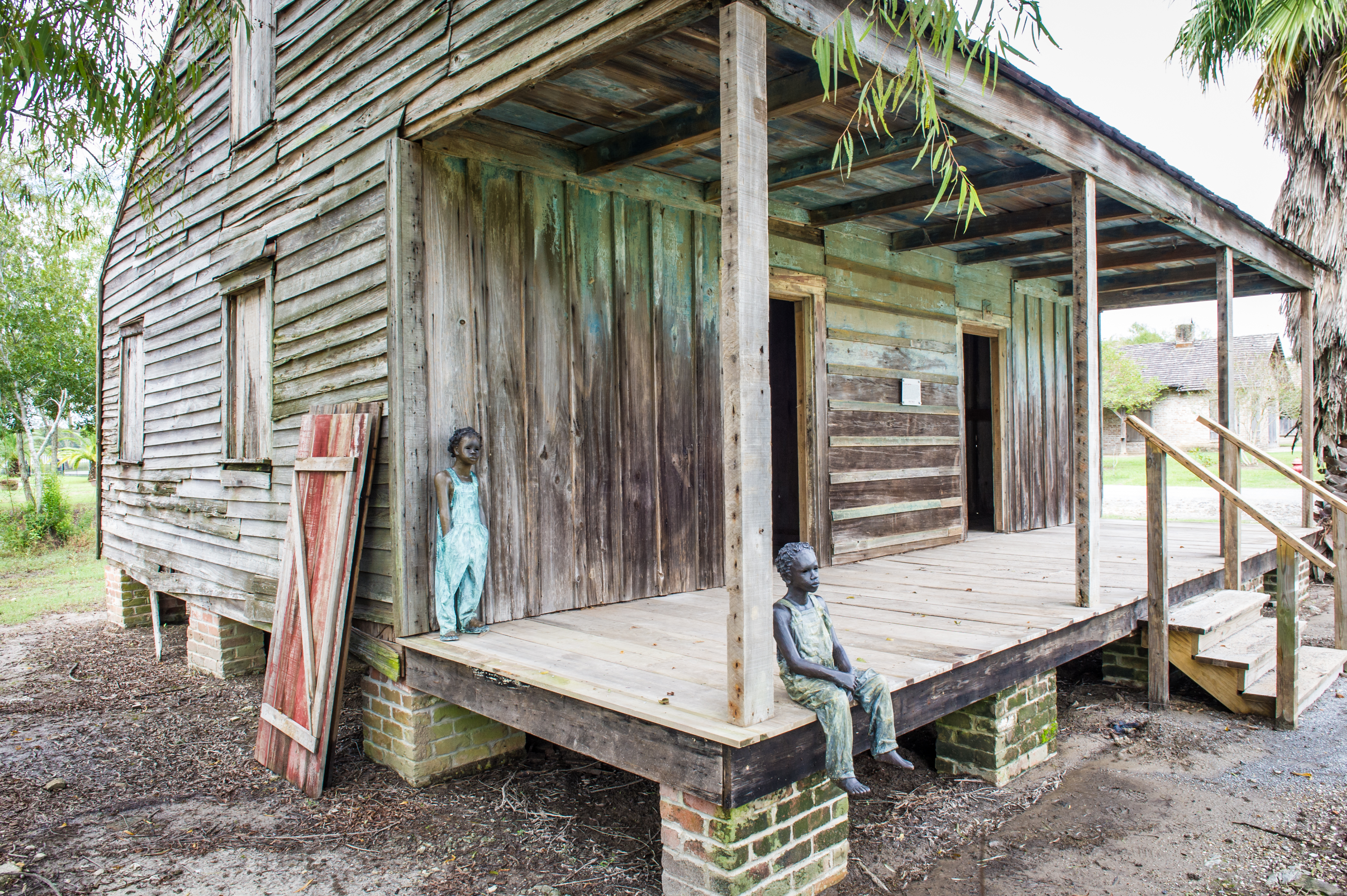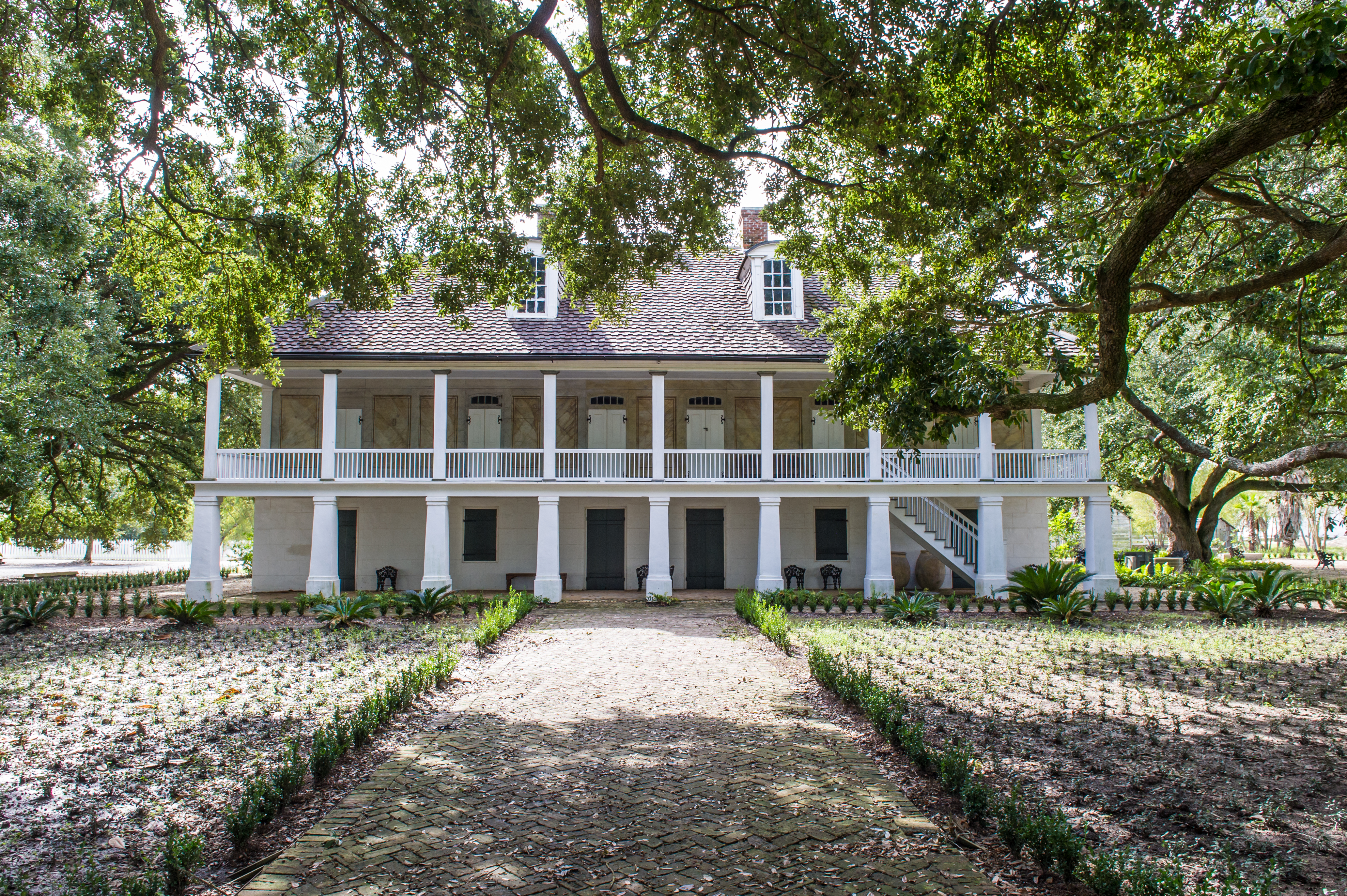
Visiting a plantation museum today can be a jarring experience. Since the mid-twentieth century, the once-ubiquitous economic engines of the pre-Civil War South have been recast as elegant mansions. Visitors are meant to feel comfortable and safe, strolling grounds surrounded by lush landscaping and feeling nostalgic for a romantic, simpler time. In some ways, visitors see what they want to see, and they are influenced by popular films and novels that prop up the “moonlight and magnolias” trope. But historians are not off the hook. Public historians, academic historians, and museum professionals alike have been complicit in rewriting plantation history to put white slaveowners front and center.
Though museum interpretation is rapidly changing, it is still possible to tour a plantation house in this country without hearing anything substantive about the enslaved people who built it. This is problematic for many reasons, but consider the numbers to start: the majority of people who lived on plantations in the nineteenth century were African and African-descended enslaved people. Enslaved people cleared the land, milled the wood, fired the bricks, built the houses, and tended land and livestock on plantations. Plantations were predominantly black spaces built and maintained by black people against their will. Yet in every former slave state, visitors can find plantation tours that elevate the stories of owners over enslaved people.
Historical Background
Museum practitioners began to minimize the history of slavery on plantations by the time the first plantation home opened for tours in the United States. Mount Vernon, the first house museum in the United States, is also the first plantation museum. Its history as a historic site bleeds into its history as a plantation, since the slave-owning women of the Mount Vernon Ladies Association bought the property in 1858 from a descendant of George Washington who was still enslaving people at the time.[i] In words that would presage the interpretation of hundreds of sites that followed in its footsteps, the founder of the Mount Vernon Ladies Association instructed the early members of the organization to “see to it that you keep it the home of Washington” and “let no irreverent hand change it; no vandal hands desecrate it with the fingers of progress.”[ii] Lauding the history of owners while minimizing or erasing the history of the enslaved became standard practice for most plantation museums until the late twentieth century.
From the time the women of the Mount Vernon Ladies’ Association opened Mount Vernon for tours in the 1850s until today, plantation museums have reflected the political culture of the country. The resurgence in what is known as “moonlight and magnolias” interpretation in the 1960s had more to do with white Americans’ discomfort with changing racial dynamics than it did historical interest. In the 1960s and 1970s, as a reaction to the civil rights movement and coinciding with a peak in interest about history around the bicentennial of the American Revolution, plantation tours became popular throughout the South. In 1976, Louisiana’s Oak Alley Plantation was advertised as a “bicentennial landmark,” whose “trees are a living link with the era of the American Revolution.”[iii] Many plantations became frozen in time in the years immediately preceding the Civil War, with guides dressed in hoop skirts inviting guests to learn about the lavish lives of antebellum plantation owners.
Throughout the twentieth century, this imagined history of plantations became big business, particularly in places such as South Carolina and Louisiana with a large number of extant plantations, many of which had been in operation with resident African-American sharecroppers and wage workers into the late twentieth century. Today, tourism is the fourth largest industry in Louisiana, with plantation tourism holding a major claim over heritage tourism dollars. Louisiana’s historic sites are top of mind for visitors, ranking higher than nightlife in visitor activities.[iv]
In the 1980s and 1990s, plantations gradually began weaving narratives of slavery into their interpretation. Even as plantation tours grappled with slavery, they often did so in the form of special events, segregated interpretive spaces, and optional tours. Discussing slavery at length only during an optional slavery tour and not on the tour of the plantation home allows visitors to think of the institution as ancillary to the true narrative—that of the plantation owners. Early slavery interpretation often failed to present enslaved people as multi-dimensional individuals. Instead, they became nameless figures who faded into the background or appeared only when they had direct interaction with the white interpretive subjects.

Changing Interpretation
Today, many sites are changing their interpretation in important ways to highlight the history of enslavement. James Madison’s Montpelier opened a groundbreaking exhibit, The Mere Distinction of Colour, in 2017; George Washington’s Mount Vernon created a comprehensive slavery exhibit in 2016; and in 2018 Thomas Jefferson’s Monticello opened an exhibit dedicated to the story of Sally Hemings, with curatorial help from a Hemings descendant. In addition to the interpretive expansion seen in Virginia sites, there are new museums opening dedicated to counter-narratives. In 2014, the Whitney Plantation opened in Louisiana as a memorial site with an exclusive focus on slavery. Charleston County Parks’ McLeod Plantation opened in 2015, interpreting the whole history of African-American labor at the site, from the time of slavery until the last resident workers left in 1990.
Despite the numerous plantation sites that are doing valuable work to bring this important history to the fore, there is still much more that public historians can do to be inclusive in their interpretation. It is important for public historians to remember that plantations are sites of trauma. Too often, we ignore the immense pain of these places in favor of a generalized interpretation that may acknowledge that life was hard, but not that it was traumatic. Spaces of brutal terror, plantations continue to bring immense pain to people whose ancestors lived and worked on them. In the case of plantations like Whitney and McLeod, there are still numerous living people who remember life on these plantations. Across the plantation South, African-American workers—many of them descended from enslaved people who worked the same land—did not leave plantations in large numbers until the Second Great Migration in the 1950s and 1960s. In South Louisiana, resident cane workers remained on plantations as late as the 1980s. Inclusive interpretation at plantation sites takes the depth and breadth of this pain seriously, acknowledging that the history has a long footprint that extends to our present day.
Language
Before reworking interpretation, it is important to remember that the language we use in our interpretation is key. By referring to enslaved people as “slaves,” we are affirming their status as objects rather than multi-dimensional human beings. Using the term “enslaved” as an adjective emphasizes their humanity first, indicating that their enslavement is just a condition and not their entire identity. Under no circumstances should interpreters use euphemisms like “servants” when referring to enslaved people. This sanitizes the history of slavery and minimizes the fact that enslaved people were held against their will. Similarly, public historians should openly acknowledge and discuss methods of punishment and coercion that were in place at the site. This truth-telling is critical to communicating a complete narrative.
Sources
Plantations that are just beginning to interpret the whole history of their site may be intimidated or afraid that they don’t have enough information to give the history of slavery justice. The interpretation of slavery is often more difficult than the interpretation of free people because of a lack of sources. Yet there are creative ways that plantation sites can use sources to uncover the history of their enslaved workers.
Because enslaved people were property, most plantations have records of the people who were held in bondage there even if those records are incomplete. Inventories and sale documents can be invaluable in learning about the ages, skill sets, and even ethnic origins of enslaved people. Researchers can usually find these documents in local courthouses. Courthouses also have records of lawsuits involving enslaved people. Enslaved people often stood trial for resisting their captivity through violence and conspiracy. These lawsuits allow us to understand their methods of resistance. Historical newspapers are also important sources of information, as they published runaway notices in nearly every edition. Plantation owners advertised by name when someone they owned ran away, and these advertisements usually include personal details about the enslaved person. Historians have launched a crowd-sourced project to digitize and transcribe runaway notices called Freedom on the Move. This is just one of many digital resources researchers can put to use. Additionally, though they must be understood in their context, the Works Progress Administration slave narratives, which are available for free through the Library of Congress, can also be incredibly useful sources that can help us interpret the daily lives of enslaved people.
Connecting with Descendants
Perhaps the most valuable relationships that plantation sites can build in order to understand the lives of their enslaved populations is with descendants of enslaved people. Descendants should be involved in interpretation in every step from planning to execution. Their perspectives are essential to equitable and inclusive interpretation. In 2018, descendants, historians, and museum professionals from around the country gathered at James Madison’s Montpelier to craft best practices for working with descendant communities in the interpretation of slavery. Many sites have been engaged with this work for some time, from presidential sites to lesser-known plantations like Somerset in North Carolina. There are numerous road maps for sites that want to engage in meaningful co-creation with descendant communities.
Above all, museum professionals who work at plantation sites must be mindful of the immense weight of the history of slavery and treat it with respect and care. We must be humble in acknowledging that our field has done damage to descendant communities and to the wider public by not honestly interpreting the history of slavery. Despite our history, there is much room for reparative practice and we should find encouragement and inspiration in the numerous sites that are doing good work. With violent events igniting Americans over issues of race and history in places such as Charleston and Charlottesville, this is a critical time for historic sites to bravely tell the truth.
Notes
[i] “The Early History of the Mount Vernon Ladies’ Association,” Mount Vernon, https://www.mountvernon.org/preservation/mount-vernon-ladies-association/early-history-of-the-mount-vernon-ladies-association/.
[ii] Jessica Foy Donnelly, Interpreting Historic House Museums (Lanham: AltaMira Press, 2002), 22.
[iii] The Assumption Pioneer, July 1, 1976, 4.
[iv] D.K. Shifflet & Associates, Ltd., “Year-End 2017 Visitor Profile: An Inside Look at the Louisiana Travel Market,” State of Louisiana Cultural Resources & Tourism Department study, 2018.
Suggested Readings
van Balgooy, Max, ed. Interpreting African-American History and Culture at Museums and Historic Sites. Lanham: Rowman & Littlefield Press/AASLH, 2014.
Berlin, Ira. Generations of Captivity: A History of African-American Slaves. Cambridge: Belknap Press, 2004.
Gallas, Kristin, and James DeWolf Perry, eds. Interpreting Slavery at Museums and Historic Sites. Lanham: Rowman & Littlefield Press/AASLH, 2014.
Horton, James Oliver, and Lois E. Horton, eds. Slavery and Public History: The Tough Stuff of American Memory. Chapel Hill: University of North Carolina Press, 2008.
National Summit on Teaching Slavery. “Engaging Descendant Communities in the Interpretation of Slavery at Museums and Historic Sites.” History News, 74, no. 1 (Winter 2019): 14-21.
National Summit on Teaching Slavery. “Engaging Descendant Communities in the Interpretation of Slavery: A Rubric of Best Practices.” Technical Leaflet 285. American Association for State and Local History.
Rose, Julia. Interpreting Difficult History. Lanham: Rowman & Littlefield Press/AASLH, 2016.
Author
~ Ashley Rogers is the Executive Director at the Whitney Plantation in Wallace, Louisiana. She is a frequent speaker on the topic of slavery interpretation and she has served as an advisor on museum projects with the Atlanta History Center, Rhode Island’s Center for Reconciliation, and Stenton. She is a co-author of the MASS Action toolkit and James Madison’s Montpelier’s rubric for descendant community engagement. She can be reached at [email protected].
